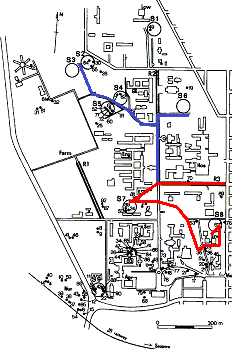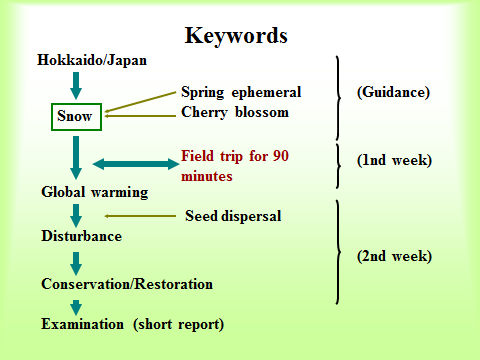(Upload on April 15 2025) [ 日本語 | English ]
Mount Usu / Sarobetsu post-mined peatland
From left: Crater basin in 1986 and 2006. Cottongrass / Daylily
The guidence is held in D103-GSES at 14:45 on April 14 2025.
Related pages [ Flora list | Back issues ]
I am the instructor in charge this year. If you have any queries, please contact me.
Instructors:
Former instructors: Kazuhiro Toyoda, Tatsufumi Okino, Masaaki Kurasaki, Histoshi Suzuki Course Category
Course offered by Graduate School of Environmental Science Keywordsenvironments, natural sciencesCourse objectivesThe course will address five issues in environmental earth sciences:1) global warming and ocean ecosystems, 2) environmental changes and animal diversities, 3) plants and plant ecosystems in Japan, 4) environmental pollution and remediation, and 5) nanotechnology for environmental sciences The major objective of this course is to engage students in interdisciplinary discourse by addressing each of these issues. Course goalsGrasping issues in environmental earth science with various spatial scales, and examining the interdisciplinary discourse by addressing each of the challenges. |
Course outline

Grading PolicyActivities in class participation (40%) + essay questions (30%) + short exam (30%) TextbookThe handout will be provided and references are introduced in each lecture. Class Time, Dates and Location14:45-16:15, Monday, D103-GSES |
April 14 2025Guidance What is environmental science?
What is environmental science?Climate in Japan: temperature and precipitation Sakura front (cherry blossom front)
Equation for predicting the date of cherry blossom Question: find out the common characteristics of the five species Trillium kamtschaticum Pall. (Liliaceae) = Emblem of Hokkaido University
Corydalis ambigua Cham. et Schlecht. (Papaveraceae) Deciduous and evergreen forests Spring ephemeralsIntroduction of instructors Supplements (for field trip) May 26 2025Field trip: see the flora list and mapGet gather this lecture room by 14:45We go to a tiny field trip for watching plants in Hokkaido, if the weather is not so bad. (It was cloudy. No problem for the trip.) |
Keep in mind Prepare something you need, if you do not like to meet disasters, such as mosquito attack and drizzle. During the trip, mention the seed dsipersal types of plants. [ Field equipment ] June 2 2025 Number of exotic species in Japan
Number of exotic species in JapanPrediction of ecosystem changes derived by global warming Seed dispersal Relationship between seed dispersal types and succession Migration pace on plant communities with reference to seed dispersal types SnowDorso-ventral structure in JapanStraight and dwarf forms of trees Skislope vegetation
IPCC AR5 Mixed forest Routes of plant immigration for 2 million years DisturbancesScale, frequency, and intensityIntermediate hypothesis (or theory) Look at the campus Flood - disturbance-maintained plant communities Thank you for joining! |